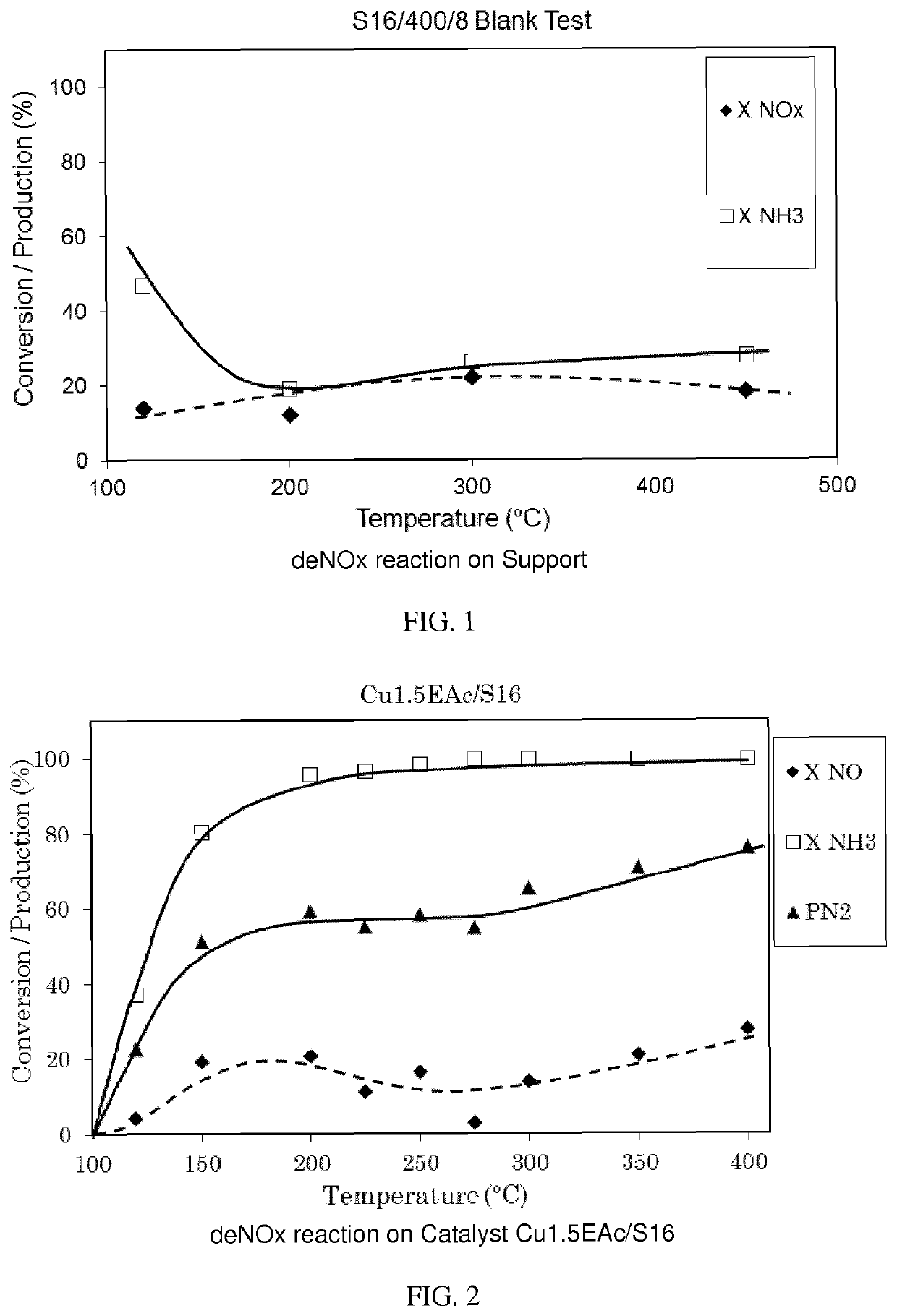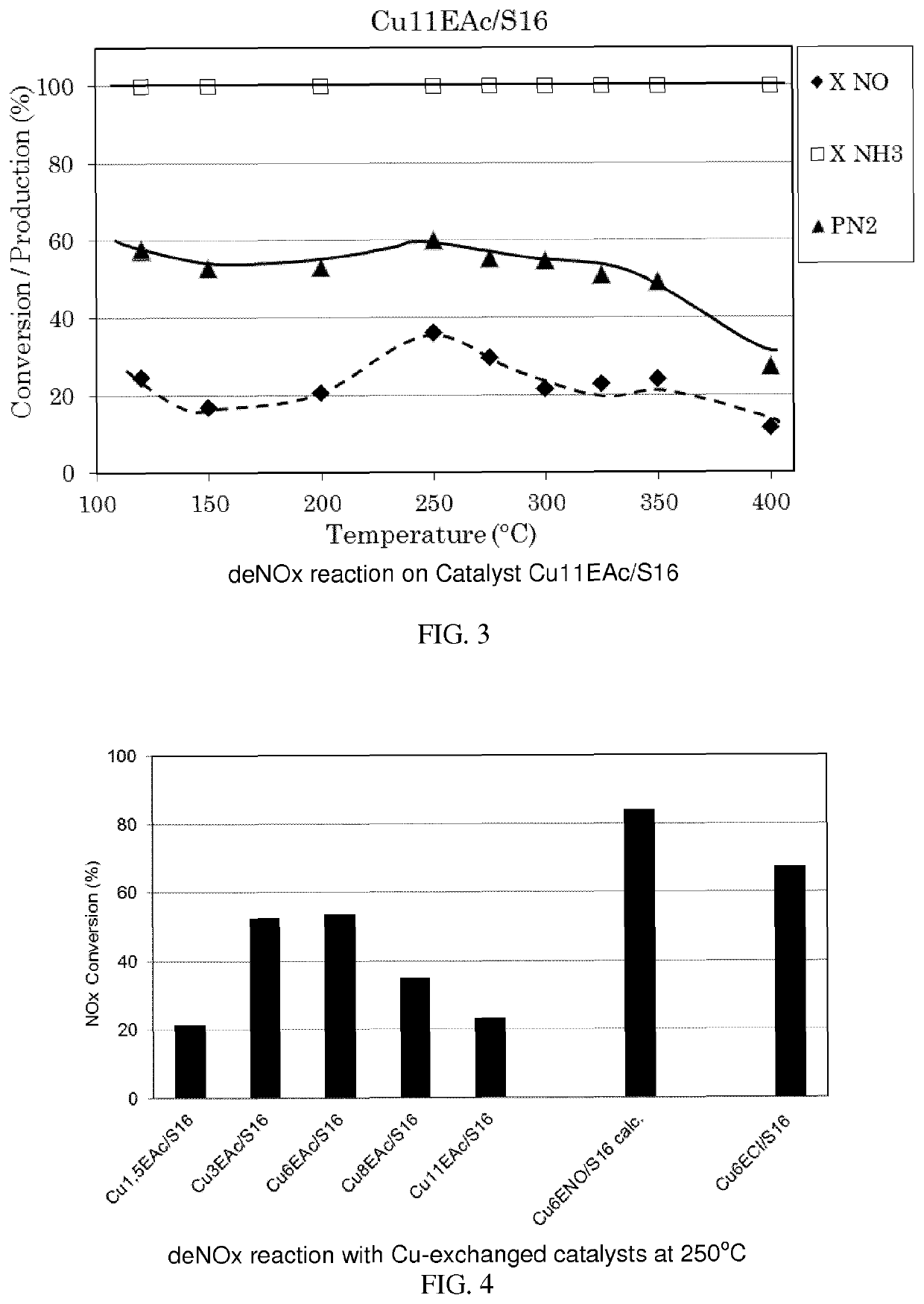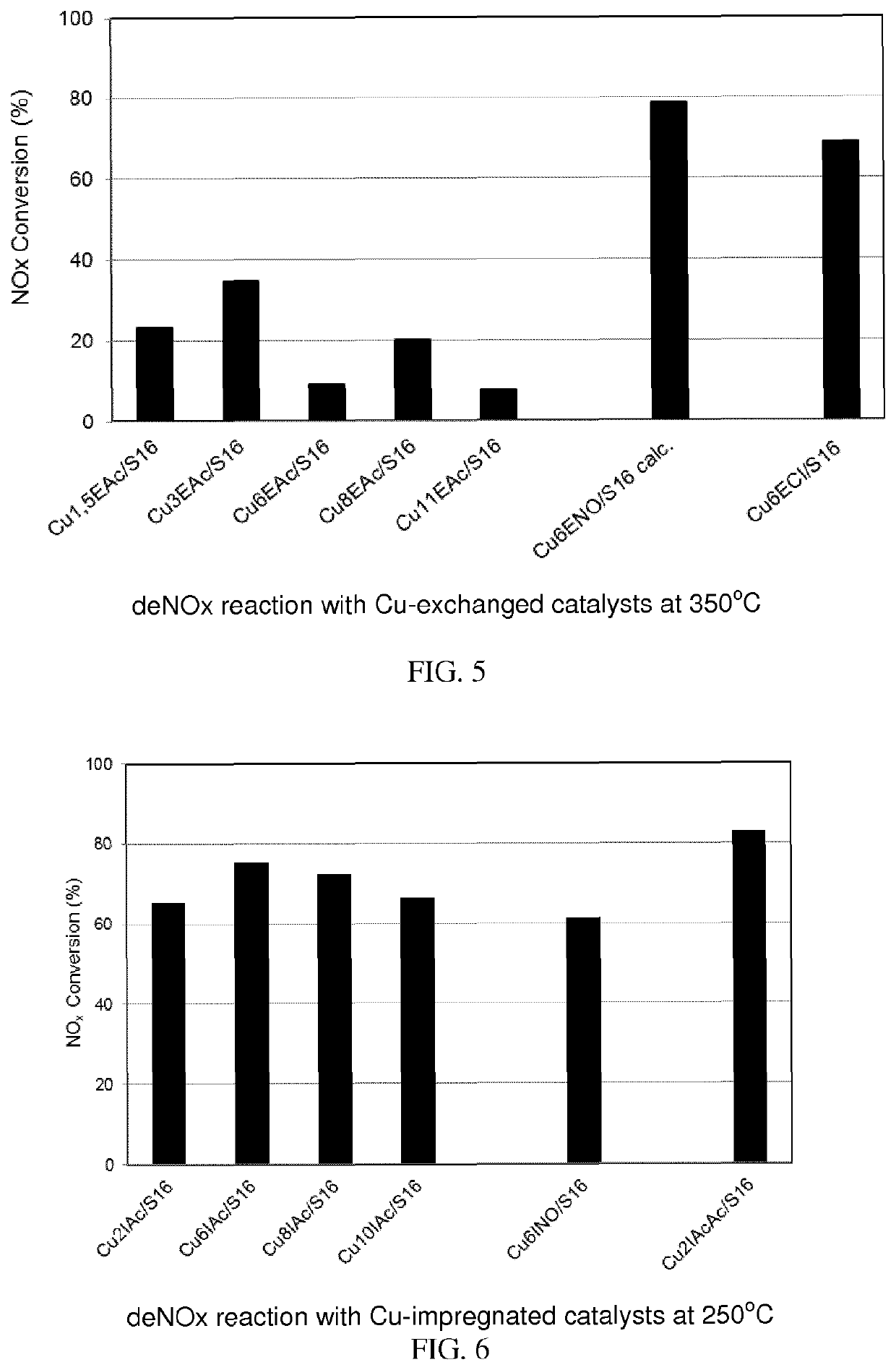Copper supported catalyst comprising a ca-deficient hydroxyapatite for waste gas NOX removal
a technology of hydroxyapatite and supported catalyst, which is applied in the direction of metal/metal-oxide/metal-hydroxide catalyst, physical/chemical process catalyst, separation process, etc., can solve the problem of limited capacity, limited maximum removal of pollutants, and difficulty in finding a catalytic system to selectively obtain no reduction by ammonia in a large temperature interval, so as to improve flowability and dispersion ability
- Summary
- Abstract
- Description
- Claims
- Application Information
AI Technical Summary
Benefits of technology
Problems solved by technology
Method used
Image
Examples
example 1
on of Calcium Phosphate Porous Material to Serve as Catalyst Support
[0286]In this example, three calcium phosphate (Ca / P) supports labelled S12, S14, S16 were made under similar conditions as those described in example 1 (particularly in examples 1b and 1c) of WO2015 / 173437 patent application. The differences in conditions are explained below. After synthesis, the support samples were filtered and these wet samples were subjected to several analysis.
[0287]The calcium phosphate (Ca / P) support S12 was prepared in similar conditions as the ones of example 1b of WO2015 / 173437. Limestone was dispersed in water at 20-25° C. in a baffled 200-liter reactor. For the first step, H3PO4 (75%) was then added to this suspension and the mixture was stirred at 390 rpm using a double 4-blade impeller. At the end of the addition of acid, the mixture was heated up to about 50° C., and a 25 wt % suspension of Ca(OH)2 was added to maintain the pH of the suspension at 8-8.8 for the second step. The react...
example 2
ization of Support Composition
[0315]In this example a calcium phosphate (Ca / P) support labelled S97 was made under similar conditions as those described in example 1 of WO2015 / 173437 patent application. The sample was dried for 48 h at 105° C. in a drying oven. All analyses below have been carried on the dried sample.
[0316]The composition of the support was determined.
[0317]The calcium carbonate (CaCO3) concentration was calculated from the following technique. An Orsat gas analyzer is an apparatus in which various gases, in this case CO2, can be selectively absorbed by passing them through a series of preselected chemical solutions. The apparatus mainly consists of a calibrated water-jacketed gas burette, containing slightly acidified NaCl brine with a trace of a colour indicator (methyl orange). The burette is connected by glass capillary tubing to an absorption bottle containing a 4 M sodium hydroxide solution, which absorbs the CO2 gas. By acidification and heating of the sample...
example 3
on of Catalysts
[0332]The catalyst samples prepared were identified by a code; in the code there were the Cu wt. % (X), the preparation method used (I: Impregnation or E: ion exchange), the Cu-precursor used (Ac: Acetate or Acac: Acetylacetonate or NO: nitrate or Cl: Chloride) and the support sample (S16 as used in Example 1).
[0333]3a—Examples of Catalyst Preparation by Impregnation
[0334]Catalyst Cu2IAcac / S16:
[0335]The support sample S16 was dried at 120° C. for 16 h=6.0549 g. 0.5042 g Cu(Acac) was dissolved in 150 ml of mixture water-isopropyl alcohol (1:1) (not clear solution) to reach a molar concentration of 0.016 M and put into contact with support sample.
[0336]1° step: Cu-deposition on S16 surface by using a rotary evaporator and a dropping-funnel, by alternating cycles of dropping of the Cu-solution and evaporation of the solvent (hot water maintained at 60° C.). The operation lasted 6 hours.
[0337]2° step: drying of the impregnated powder in an oven at atmospheric pressure at ...
PUM
| Property | Measurement | Unit |
|---|---|---|
| molar ratio | aaaaa | aaaaa |
| wt % | aaaaa | aaaaa |
| BET specific surface area | aaaaa | aaaaa |
Abstract
Description
Claims
Application Information
 Login to View More
Login to View More - R&D
- Intellectual Property
- Life Sciences
- Materials
- Tech Scout
- Unparalleled Data Quality
- Higher Quality Content
- 60% Fewer Hallucinations
Browse by: Latest US Patents, China's latest patents, Technical Efficacy Thesaurus, Application Domain, Technology Topic, Popular Technical Reports.
© 2025 PatSnap. All rights reserved.Legal|Privacy policy|Modern Slavery Act Transparency Statement|Sitemap|About US| Contact US: help@patsnap.com



